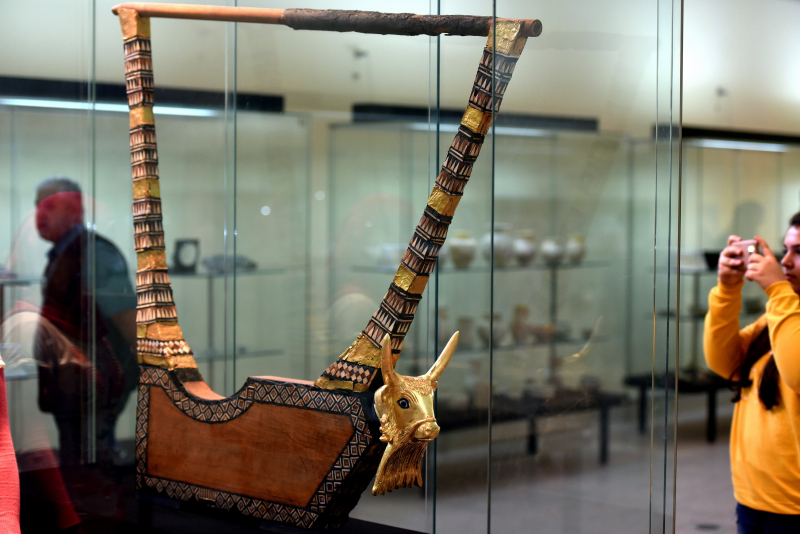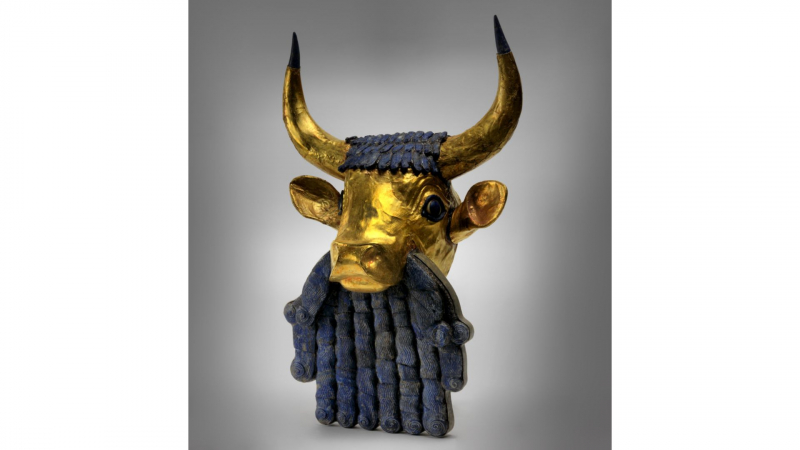The Bull Lyre
One of the earliest stringed instruments ever found is the Bull Headed Lyre. It is considered as one of the most outstanding examples of Mesopotamian art. The lyre was discovered during the 1926–1927 season of an archaeological dig conducted jointly by the University of Pennsylvania and the British Museum in what is now Iraq in the Royal Cemetery of Ur. The excavations were headed by Leonard Woolley. The lyre was discovered next to more than sixty soldiers' and attendants' corpses in "The King's Grave." It is one of several lyres and harps from the Early Dynastic III Period discovered at the cemetery (2550–2450 BCE). The University of Pennsylvania Museum of Archaeology and Anthropology (the Penn Museum) received the lyre as part of the initial shipment of items in 1929. The object is made up of a quadripartite panel, a sound box, and a sculptured bull's head. It has undergone substantial conservation and repair work throughout the years.
The character most commonly mentioned in some ancient inscriptions as having a lapis lazuli beard is the Mesopotamian sun god Utu/Shamash. He was frequently believed to take the shape of a bull, especially in his duty at daybreak. For these reasons, the Penn Museum claims that Utu/Shamash is represented by the bull head on the lyre. The head was constructed of a single piece of gold plating over a wooden core that has since crumbled, and the ears and horns were fastened to the skull with tiny pegs. Carved lapis lazuli tesserae on a silver backing are used to create the beard.
A front panel of the lyre features four scenes related to Early Mesopotamian burial rites. Shell inlay is used to create the designs on the bitumen. In the first panel, two bulls with human heads are being wrestled by a guy. The second depicts a lion carrying a jar and a hyena carrying meat. The third depicts an animal holding a rattle and playing a bull-shaped lyre while being supported by a bear. In the lowest register, a man is greeted by a scorpion guarding the underworld. Utu / Shamash served as the judge of the dead in addition to being the sun deity. He appears to be overseeing the events depicted in the panel attached below his head in the lyre.










